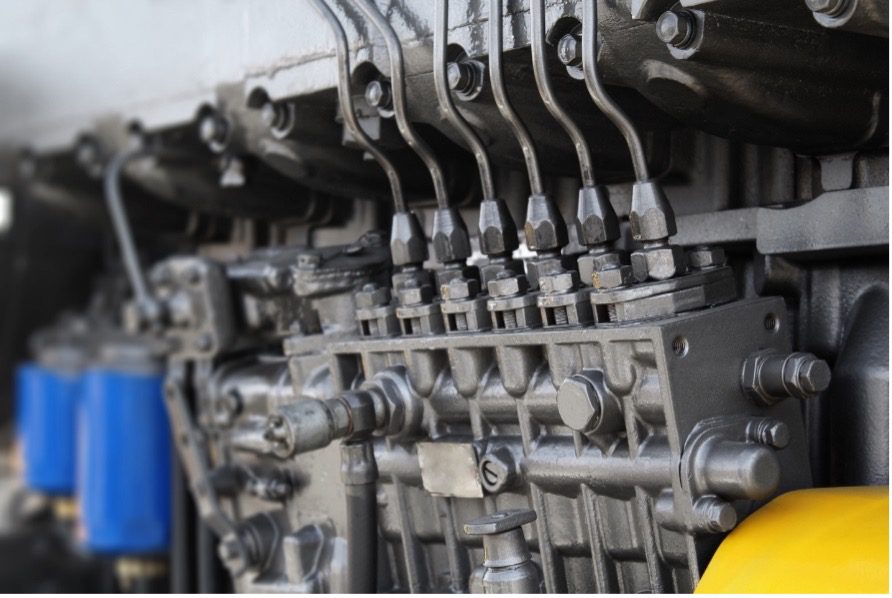
Selective catalytic reduction (SCR) is an advanced active emissions control technology system that reduces stationary source emissions in diesel engines. Because of its exceptional economic and environmental benefits, SCR has been particularly helpful in meeting the Environmental Protection Agency’s latest diesel engine emission standards for heavy-duty vehicles, off-road equipment, and diesel passenger vehicles.
SCR for Power Plant Applications
Selective Catalytic Reduction Overview
SCR injects a liquid-reductant agent through a special catalyst into the exhaust stream of a vehicle’s diesel engine. The reductant source is usually automotive-grade urea known as diesel exhaust fluid (DEF). The DEF triggers a chemical reaction that converts nitrogen oxides into nitrogen, water, and tiny amounts of carbon dioxide (CO2), which is then expelled through the vehicle’s tailpipe.
SCR technology allows nitrogen oxide (NOx) reduction reactions to take place in an oxidizing atmosphere. The word ‘selective’ is used because the technology reduces levels of NOx through the use of ammonia as a reductant within a catalyst system. Moreover, the chemical reaction is known as ‘reduction’ because the DEF is the reducing agent that reacts with NOx to convert the pollutants into nitrogen, water, and tiny amounts of CO2. The DEF can be rapidly broken down to produce the oxidizing ammonia in the exhaust stream. Ultimately, SCR technology can achieve NOx reductions of up to 90%.
Why is SCR Technology Important?
SCR technology is one of the world’s most cost-effective, fuel-efficient technologies for reducing diesel engine emissions. This is important because all heavy-duty diesel truck engines produced after January 1, 2010, must meet the EPA’s latest emissions standards (which are some of the strictest in any country) for reducing particulate matter (PM) and NOx to near-zero levels. As mentioned above, SCR can reduce NOx emissions up to 90%–additionally, it can reduce CO emissions by 50-90%, and PM emissions by 30-50%.
SCR systems can combine with a diesel particulate filter to achieve even greater emission reductions for PM. In the commercial trucking industry, many operators of SCR-equipped trucks have reported 3-4% boosts in fuel economy. Additionally, off-road equipment such as that used in the construction and agricultural industries must meet its own EPA emissions standards requiring similar reductions in NOx, PM, and other pollutants. For all of these requirements, SCR is an important solution for helping off-road equipment achieve its goals.
Other Applications for SCR
Along with decades of proven success in reducing stationary source emissions in commercial diesel engines, marine vessels (including cargo ships, ferries, and tugboats) are being equipped with SCR technology at an impressive rate. Furthermore, SCR systems are increasingly found in the growing number of diesel passenger vehicles being manufactured by automakers worldwide.
Contact Us Today Regarding SCR Applications
Through its Cleaner Trucks Initiative, the EPA is committed to its efforts to develop and enforce more stringent, near-zero tailpipe emission standards for commercial vehicles. As such, refinements and improvements to SCR systems will be critical for meeting these objectives. Dosing events, innovative designs, and novel placement of SCR systems in commercial vehicles will all play an important role, and Mid-West Instrument is closely monitoring developments.
Mid-West Instrument
Since 1958, Mid-West Instrument has been a leading global manufacturer of differential pressure gauges, transmitters, and switches. Our company is family owned and operated from our facility located in Sterling Heights, MI.
Our state of the art factory is equipped the latest CNC machine tool technology, test equipment, calibrations standards, and oxygen clean room. This allows us to maintain precise tolerances and product quality with the shortest lead times in the industry.
Contact our experienced professionals to learn which differential pressure instrument best fits your application.

